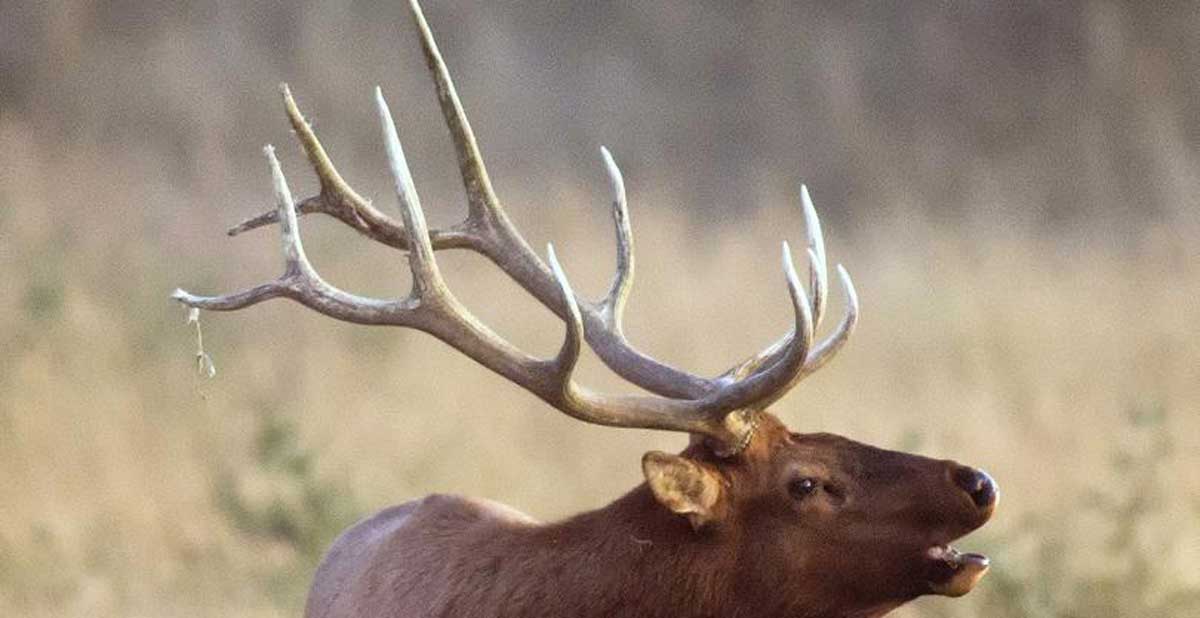Forget slow and stealthy. Go big after elk and make all the noise you want.
While out hiking one spring, I saw an ear flicker under a clump of trees 50 yards away. I took off my pack, bent over and did my best calf impression. I snapped twigs, tooted my calf call and did everything to make my presence known. A cow burst out of the trees, ran toward me and stood 10 yards away. The veins in her neck were as big as my fingers. I grew nervous. I stood upright before she thought me a discipline-deficient calf.
To my surprise, she didn’t move until I flapped my arms and did my best human impression. As the herd walked away, I tooted the call again and she came barreling back. I left well enough alone.
The lesson? I’d played the wind and wandered into a likely elk haven. It paid off with these cows, and it can certainly pay off in the fall with herd bulls as long as you keep a few tricks in mind.
Elk are intelligent
Any public lands herd bull has earned a master’s degree in education. They’ve been schooling hunters for years, and they’re wise to your bugles. Otherwise, they’d be last year’s raghorn jerky. Aside from not playing the wind, using a bugle too soon can be your worst move. If you get within a quarter-mile of a herd and bugle, a smart bull is going to think you’re a threat (a hunter or another bull), gather his harem and high tail it to the dark side of where you don’t want to go.
Your best bet is to get to a high spot in the morning before dawn and glass the open parks and hillsides as it gets light. See a herd? Take a compass bearing and run to them. Rutting elk can easily cruise a dozen miles in a day—but they could easily just stay put where they feel safe. If you get within 150 or 200 yards and spot them, find a strategy. A cow call at this range may well bring in a cow or raghorn satellite, but the big boy won’t likely give up the herd.
Be smart
Time to turn into a predator. Assess the geography and make it work for you. The herd is likely moving into the wind. It’s best for you not to circle ahead. Instead, stay back or off to the side, being careful not to get busted by stragglers. Stay concealed. If you get caught, act like an elk. Take a couple of hunched steps and stop. Look around. Move yourself to cover and stop. You’ll get some stares but hopefully that’s all.
When you know the herd bull is within 75 yards, rip a nasty bugle followed by deep grunts. That tells the bull you’re close and you’re a challenge. If you’ve got a partner, they should set up just ahead of you. If the bull comes straight in, stay put and wait for your shot.
The bull may circle to get downwind. If he whiffs you, game over. Time to charge. You’ve got nothing to lose. Nock an arrow and take off to intercept him. Use whatever cover you have to break up your outline. Sound like a bull. Break branches. Bugle. Just don’t let him get downwind. Pick a spot to catch your breath and wait for him to cross your path. You won’t make a good shot until you calm down, so anticipate his direction of travel. If he chooses to go elsewhere and doesn’t wind you, stay on him.
If he stays close, keep bugling, rake some trees with a thick stick and make him mad. He may gather his gals and take off for the next county, or he just might make it his goal to destroy you. If nothing else, you’ll have plenty of fun.Have you charged after a bull? Let us know below.
